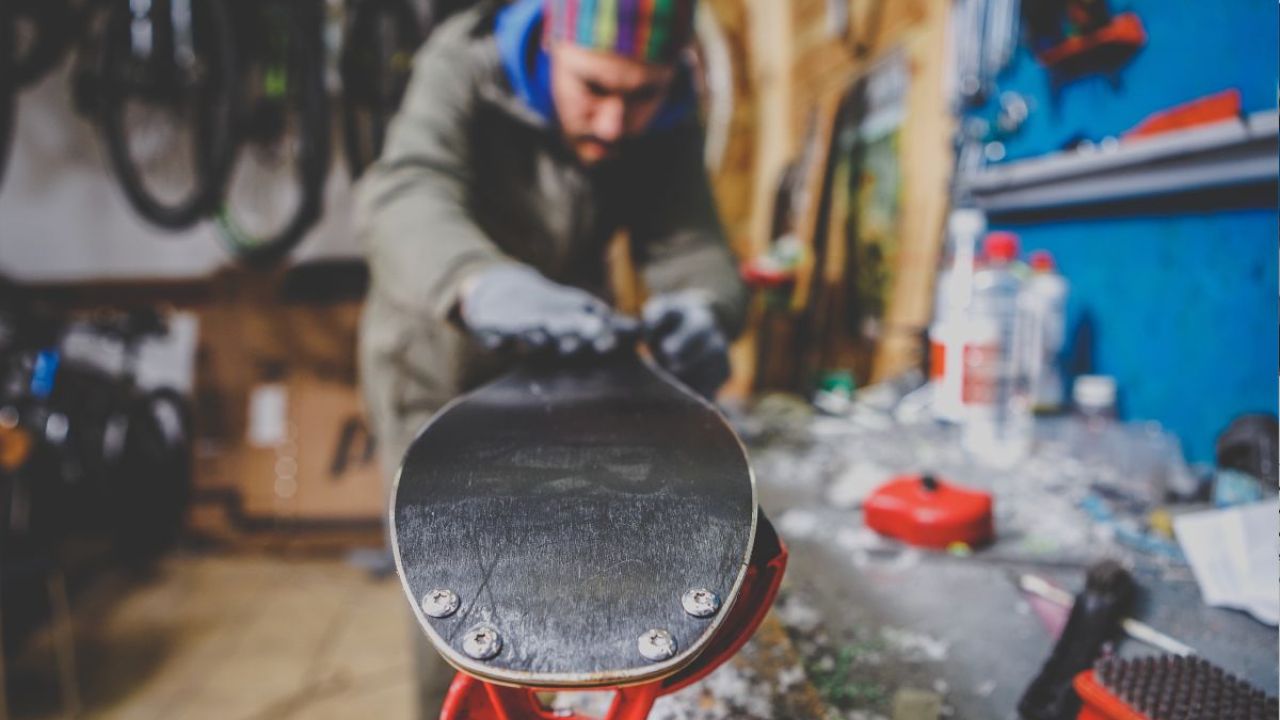
Add skis and snowboards to the long list of consumer products treated with the toxic “forever chemicals” known as PFAS: outerwear, furniture, carpeting, upholstery fabric, period products, cookware, “long lasting” makeup, and takeout food packaging, among others.
Special wax used to coat skis and snowboards to lower wear and tear and enhance performance often contains PFAS, particularly in higher-end versions. The chemicals’ nonstick properties help skis glide better across the snow.
But a move is underway to get these substances out of ski wax, since they both harm the people who apply it and contaminate the ground and water.
What’s ski wax?
Ski wax is a technology that has evolved from its beginnings, in the 1600s, when it was made of pine tar pitch and rosin.
Today there are hundreds of types of ski wax on the market. Olympic wax technicians might choose among 200 to 300 waxes when preparing skis, taking into consideration weather conditions, the skier’s strengths and type of snow.
Environmental and health harms
Ski wax contaminates the environment, since it flakes off. One study measured levels of PFAS in melted snow, soil and water after a ski race and found they were extremely high.
And PFAS harm the people who apply the wax, particularly since it is used frequently over a period of many years. In one study, 92 percent of participants, amateur skiers and snowboarders, applied the wax themselves, and roughly two-thirds used a wax containing PFAS.
PFAS build up in the body and do not break down in the environment. The chemicals are found in the blood of virtually everyone, including newborn babies. Very low doses of PFAS in drinking water have been linked to suppression of the immune system, including reduced vaccine efficacy, and an increased risk of certain cancers. PFAS are linked with increased cholesterol, reproductive and developmental problems and other health harms.
Bans and the search for alternatives
The International Ski and Snowboard Federation, which oversees elite alpine sport competition, banned fluoro waxes for the 2023-24 season. It will test randomly for the substance, though tests are slow and expensive.
Ski wax containing PFAS is no longer manufactured in the U.S. But until several years ago, alternatives were uncommon. Then, in 2016, a Colorado skier, Peter Arlein, started MountainFLOW to improve the skiing experience without the use of toxic chemicals. Three years later MountainFLOW launched its PFAS-free ski wax.
Consumers shouldn’t have the burden of ensuring they aren’t exposed to PFAS – that’s the federal government’s role. But until lawmakers and regulators step up to make sure we’re protected, you’ll have to find the products you need without toxic chemicals. And new products made without PFAS are becoming increasingly available.
If you want to apply wax to your skis or snowboard yourself, look for one made without forever chemicals and wear a mask. If you don’t want to wax them yourself, find out what type of wax is used where you ski and whether it’s possible to switch to one without PFAS.
Note: EWG President Ken Cook will interview MountainFLOW founder and CEO Peter Arlein on Cook’s upcoming podcast, coming out in March. MountainFLOW makes plant-based, PFAS-free ski wax and bicycle lubricant.



